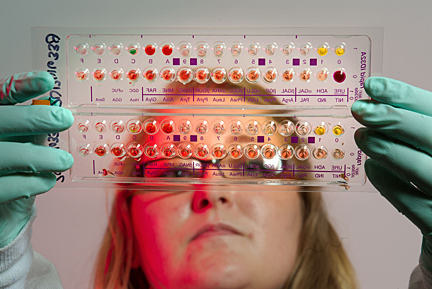You are here
Engineering Safe Healthcare: Why CDC Needs Business Partnerships
Working at CDC, I see how our country is doing at protecting patients during medical care. While we’ve made some solid progress, I am still shocked when we uncover outbreaks or infection control breaches that are simple and unacceptable lapses in basic safe care. Every day, one in every 20 hospital patients has an infection caused by their medical care. Imagine this from a business perspective—the last thing you want is for your employees to be sick or unable to work. If your employees get an infection on top of whatever problem leads them to seek care, the consequences can be devastating. For example, bloodstream infections alone can extend hospital stays for up to one month and cost up to $40,000 extra per person. And today, we have the risk of infections that are drug-resistant as many bacteria are outsmarting our best antibiotics.
 We need to work toward engineering safety into our healthcare system; right now there are too many opportunities for medical errors to occur. CDC is passionate about improving the safety of our nation’s healthcare system, but we cannot do it alone. Businesses around the globe can include safe patient care in their decision making when purchasing coverage for their personnel. Health plans can actively support use of evidenced-based tools and infection prevention trainings for healthcare personnel in every type of medical facility. Healthcare professionals need to improve the way antibiotics are prescribed, as unnecessary and overuse of antibiotics breeds drug-resistance. Making the best use of electronic health records offers potential for huge improvements in how we track infections—when we know where infections occur, we can protect patients. We need to do more research on new healthcare innovations that can protect patients and empower patients to insist on safe medical care.
We need to work toward engineering safety into our healthcare system; right now there are too many opportunities for medical errors to occur. CDC is passionate about improving the safety of our nation’s healthcare system, but we cannot do it alone. Businesses around the globe can include safe patient care in their decision making when purchasing coverage for their personnel. Health plans can actively support use of evidenced-based tools and infection prevention trainings for healthcare personnel in every type of medical facility. Healthcare professionals need to improve the way antibiotics are prescribed, as unnecessary and overuse of antibiotics breeds drug-resistance. Making the best use of electronic health records offers potential for huge improvements in how we track infections—when we know where infections occur, we can protect patients. We need to do more research on new healthcare innovations that can protect patients and empower patients to insist on safe medical care.
Learn more about a CDC Foundation program to support safe healthcare.
We are fortunate that medical advances have brought lifesaving care to patients in need, yet many of those advances can come with a risk of an infection. We have made significant advances in our knowledge of how to prevent these infections, but there is much more work to be done. To see what CDC is doing to keep our healthcare system safe or to find out ways in which your business can partner with CDC, visit CDC Foundation’s new Business Pulse, view our interactive infographic, and read a Q/A from me and Dr. Jonathan Perlin, Chief Medical Officer of Hospital Corporation of America, one of the nation’s largest hospital systems.